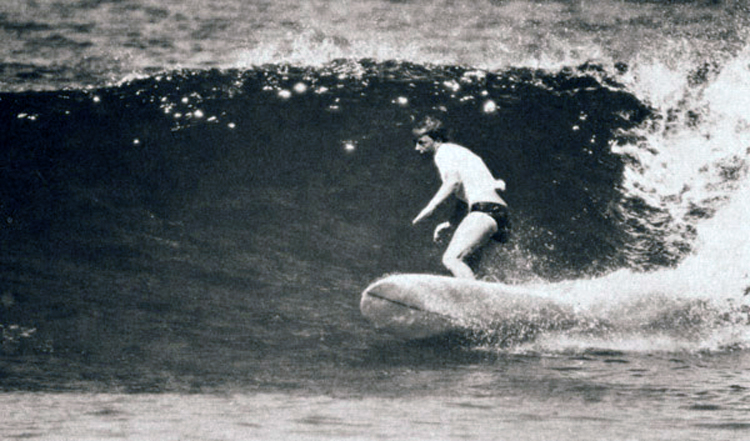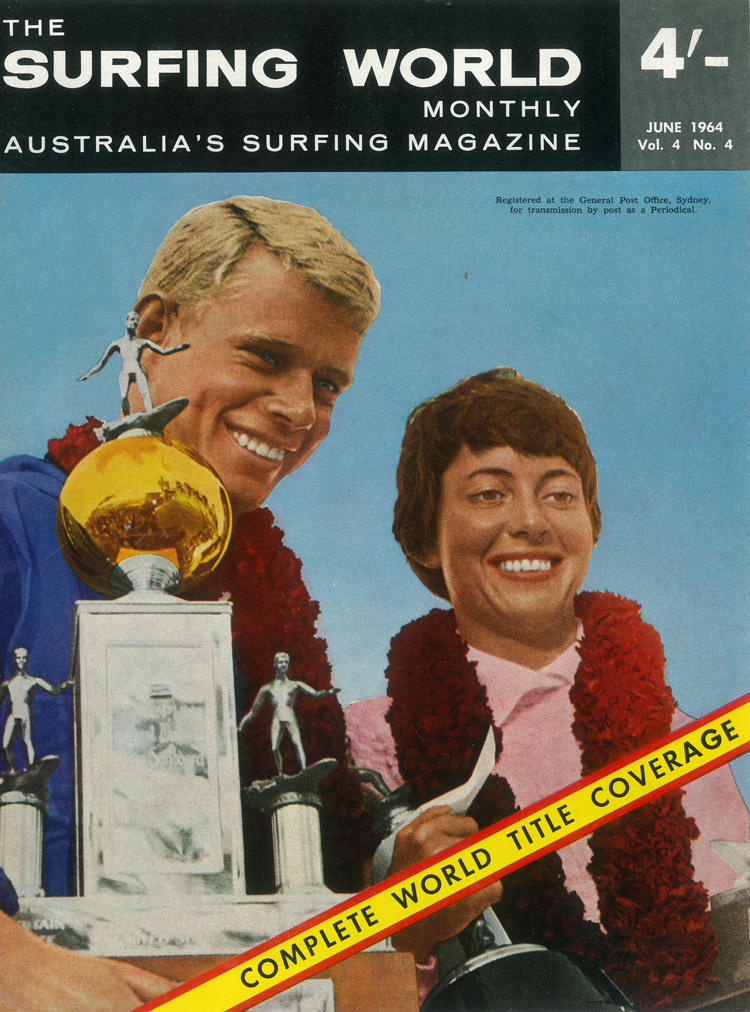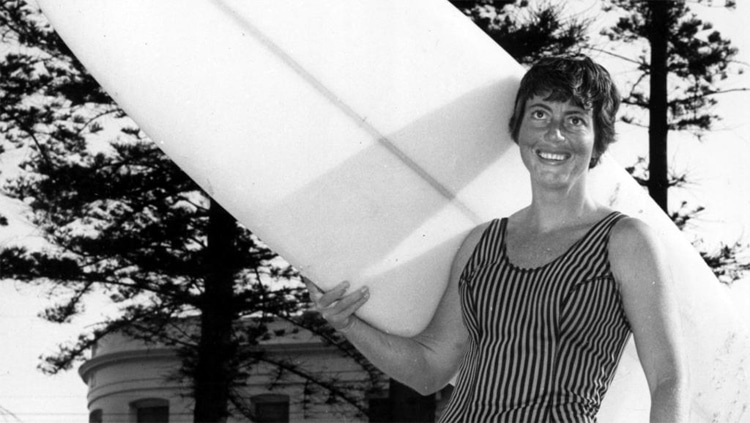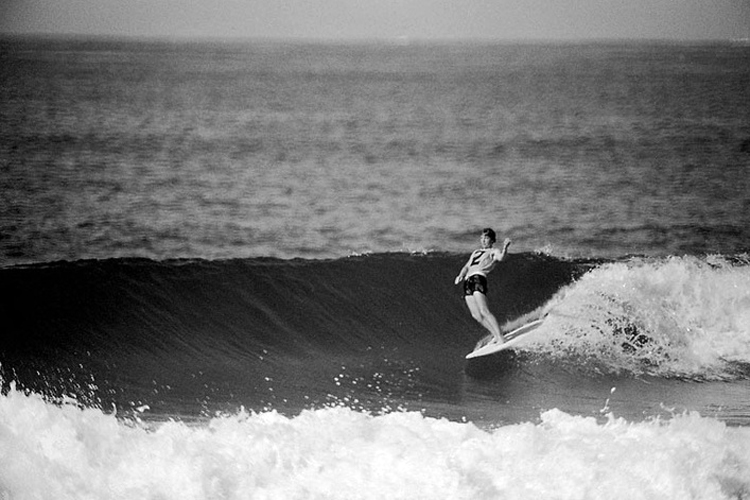Phyllis O'Donnell was born in Sydney, Australia, on August 22, 1937.
The daughter of a stenographer mother and an auto mechanic father started surfing at the age of 23.
O'Donnell taught herself the art of catching waves on a longboard when she moved with her parents to Tweed Heads, New South Wales, in 1960.
The board belonged to her older sister's boyfriend, who had left it at their home in Drummoyne, New South Wales when Phyllis was still a teenager.
The siblings were already skilled bodysurfers, so they tried surfing for the first time at Harbord.
O'Donnell's first surf instructor was the Australian Surfing Hall of Fame's first inductee, Snowy McAlister.
McAlister was her mentor throughout her career, and their friendship lasted until he died in 1987.
In 1960, the NSW young gun was already a seasoned surfer and a frequent rider at Kirra, Queensland.

The 1964 World Surfing Title
Even though Isabel Letham opened the way for women to paddle out in the mid-1910s when O'Donnell rode her first waves, surfing was still a predominantly male-dominated, Hawaiian-Californian sport.
Nevertheless, the intrepid youngster followed her passion and started competing nationally.
The Sydney-born regular footer kicked off her winning streak with a victory at the 1964 Australian national surfing titles.
And, just a few weeks later, Phyllis O'Donnell made history after defeating American champion Linda Benson at the International Surfing Federation (ISF) World Surfing Championships at Manly Beach.
The Australian had conquered the first-ever world surfing title alongside Bernard "Midget" Farrelly in front of 50,000 people.
She was the oldest athlete in the event.
"Phyllis was completely at ease," the Australian magazine Surfing World wrote at the time.
"Her placement in the wave was ideal, and her trimming and arching through the hollow sections were pretty to watch. O'Donnell was a decisive winner."
According to Matt Warshaw, author of "The Encyclopedia of Surfing," "the newly-crowned world champion "caught better waves than Benson and rode with easy confidence, at one time speeding through a section with her heels together and her back arched, then neatly cut back when the wave flattened."
"O'Donnell won easily. Benson hotdogged with her usual flair but came up two or three spinners short."
The 1964 women's world surfing champion attributed her victory to the "really bouncy music" that was playing over the PA during the final that helped her relax.
The Australian later revealed that she bought her first surfboard from Nott and Kirby, "the equivalent of getting one from a supermarket. But it was a Joe Larkin board that I won the event with."
Up until the iconic event, O'Donnell worked as a barmaid at Twin Towns Services Club in Tweed Heads.

Titles and Competitive Achievements
Phyllis' spectacular surfing performances continued and were backed up by additional trophies and accolades.
They were as follows:
- First at 1963, 1964, and 1965 Australian National Surfing Titles;
- First at the 1964 ISF World Surfing Championships;
- Sixth at the 1966 ISF World Surfing Championships;
- Third at the 1966 Makaha International Surfing Championships;
- Third at the 1966 and 1967 Australian National Surfing Titles;
- Third at the 1968 ISF World Surfing Championships;
- Second at the 1969 Rip Curl Pro Bells Beach;
- Third in the 1970 Australian National Surfing Titles;
- Fourth at the 1971 Australian National Surfing Titles;
From 1968 onward, Phyllis O'Donnell embraced shortboards.
Despite her short stature - 5'2" - and always-smiling, cheerful personality, the Sydney-born surfer was a fierce and combative opponent in the water.
"I was horribly aggressive, and I swore like a trooper," O'Donnell recalled in 2001.

A Stellar Career
The pioneer female champion surfer lived for a few months in Redondo Beach, California, in 1968.
She worked in the showroom at Dewey Weber Surfboards in nearby Hermosa Beach before returning to Australia and winning the last of her eight Queensland state surfing titles.
Phyllis eventually started writing for the Sunday Mail before hanging the leash.
In 1974, the bob-haired wave-riding star retired from competitive surfing.
"Back in the day, we'd often get cigarettes and a trophy for winning an event," she recalled.
"Occasionally, we'd also get money, but you could guarantee you'd take home a pack of Craven 'A.'"
Then, she was a judge at the Australian Women's Surfing Association's 1980 national championships.
Phyllis O'Donnell was inducted into the Australian Surfing Hall of Fame in 1996 and Huntington Beach's Surfing Walk of Fame in 2014.
The talented Australian appeared in the surf movies "Surfing the Southern Cross" (1963) and "The Young Wave Hunters" (1964).
She is one of the seven co-founders of the Australian Surfriders Association Queensland (ASAQ), later renamed Surfing Australia.
